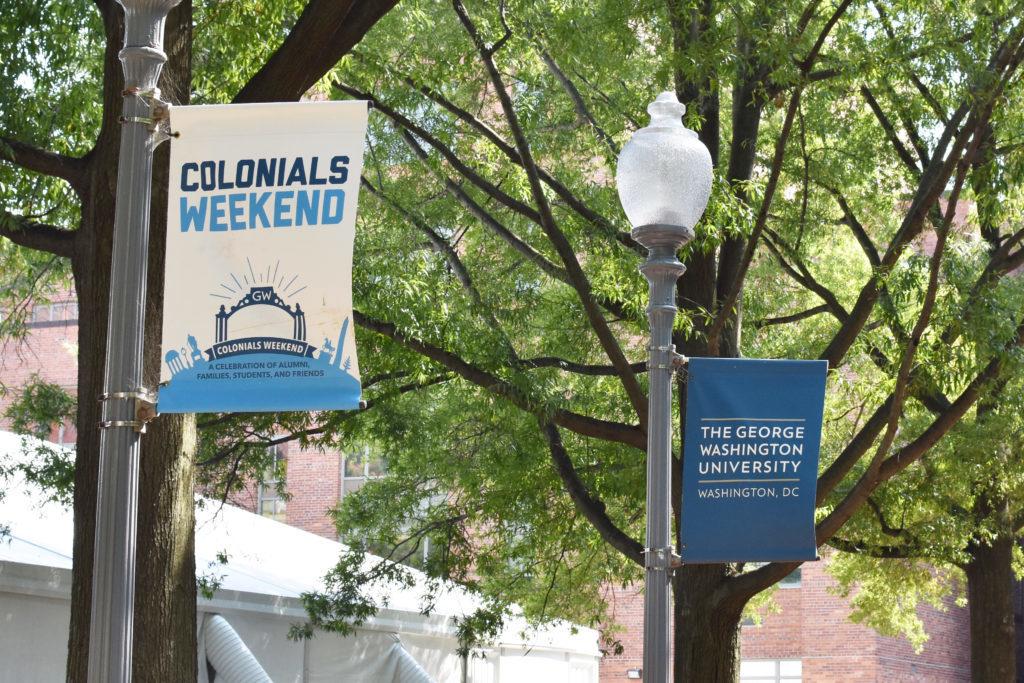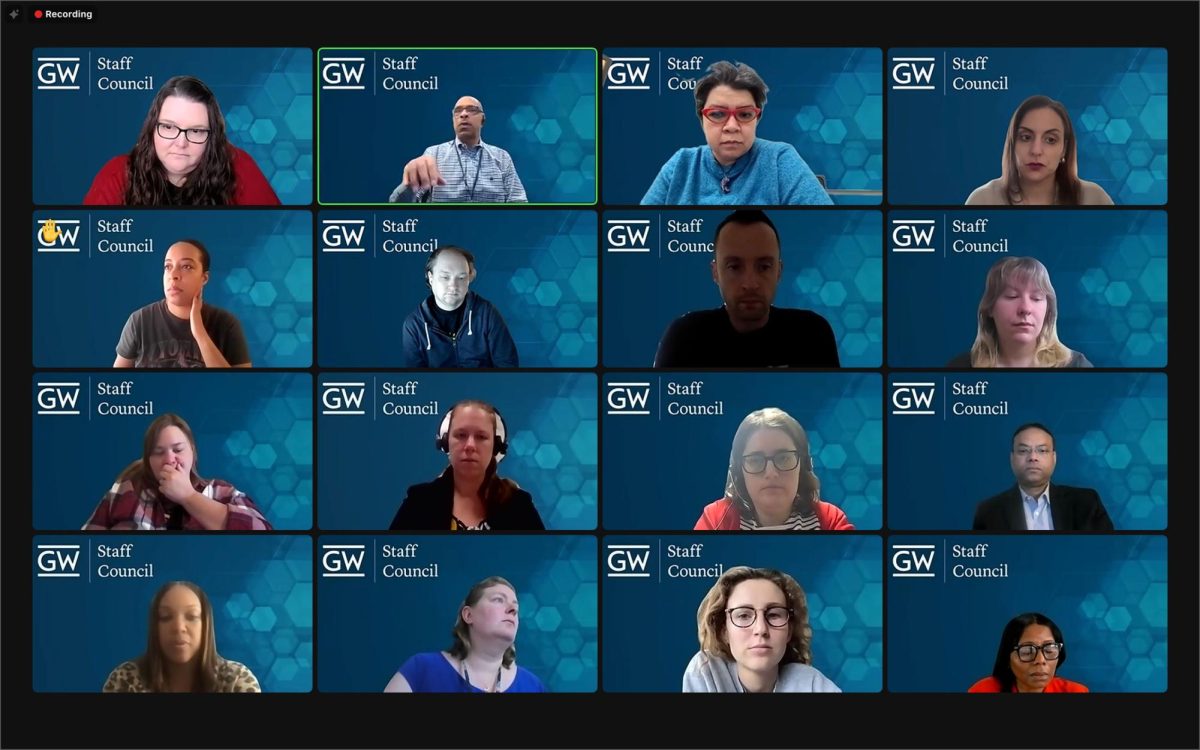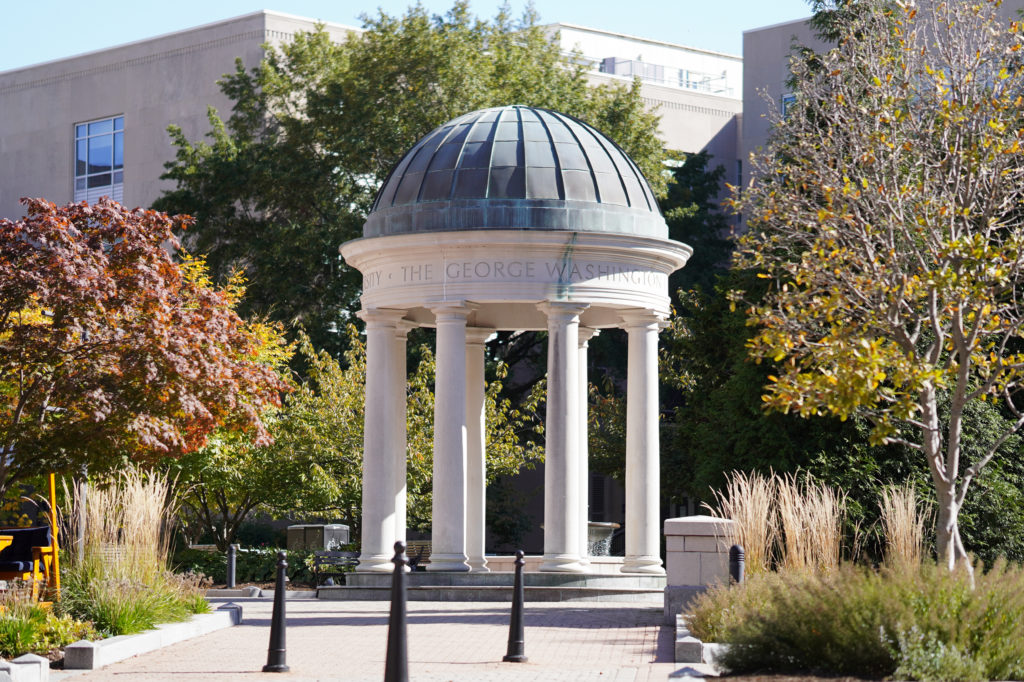Officials are declining to release how much money parents donated to GW last fiscal year, breaking with longstanding precedent to disclose the statistic publicly.
Parent donations hit the highest level in seven years in 2019, reaching $15.7 million in contributions. But officials from the Division of Development and Alumni Relations declined to provide the number of parent donations during fiscal year 2020, which ran from July 1, 2019, through June 30, 2020, stopping an at least 10-year trend of releasing the data.
DAR also declined to say how the COVID-19 pandemic has affected the number of parent donations or how much officials hope to raise from parents this fiscal year.
Higher education fundraising experts said releasing parent fundraising numbers in annual reports distributed to all donors is common practice and declining to provide that data is “unusual.”
Timothy Winkler – the principal and CEO of the Winkler Group, a private fundraising firm – said the COVID-19 pandemic upended regular fundraising tactics, requiring colleges to adapt to a virtual setting. Many universities have started hosting engagement events virtually, like homecoming reunions and dinners with the president, he said.
GW officials said the development and alumni relations office has been connecting with supporters by promoting virtual networking and online webinars through a weekly email blast. The fundraising staff also encouraged alumni to donate to the GW Cares Student Assistance Fund to contribute to relief efforts for students and to mentor graduating students through the Career Connect program.
“People, because all of us were facing the same situation, adapted really quickly,” Winkler said. “The universities that were on the front end of it and just willing to be innovative and think outside the box, they’ve actually seen significant gains this year in their fundraising.”
He said higher yields can be attributed to the efficiency of technology platforms like Zoom and Skype that allow fundraising officials to continue meeting with donors. At GW, officials adapted Colonials Weekend to include a number of remote receptions for students, parents and alumni.
Winkler added that many people have decided to donate to help universities weather financial challenges brought on by the pandemic. GW is facing a roughly $180 million budget gap this year.
“Everything going on right now seems counterintuitive,” Winkler said. “You would think that everything in the world with the pandemic would really inhibit fundraising for all. What we’ve seen is the opposite – a lot of people have really stepped up during this pandemic.”
Casey Heilig, the director of family engagement and philanthropy at Villanova University, said about 600 more families donated during the college’s day of giving this year compared to last year. She said universities need to increase communication to their supporters about pandemic-related changes and decision-making among top officials.
“When those who are invested in and care about your organization have a better understanding of what’s happening on the ground, in addition to the new needs that have arisen from the effects of the pandemic, it’ll help the development team to raise philanthropic support,” Heilig said.
Linda Durant, the vice president of development at the Council for Advancement and Support of Education, said one of the drawbacks of the virtual sphere is a lack of athletics, which can serve as a key source of engagement and donations for universities. Instead, institutions have been forced to divert their attention to the development of academic programs, career development, student affairs and technology, which typically do not yield as many donations, she said.
The athletic department at GW launched a fundraising campaign, called Together We Raise Higher, to help mitigate the financial hardship brought on by COVID-19. The campaign raised $137,000, surpassing its $100,000 goal.
Durant said parents will sometimes step forward as donors, especially if their student attended a private high school and they are accustomed to financial involvement.
“Their generosity is just incredible,” Durant said. “If they know they’re able to support their son or daughter and they have all of the technology they need, then they’re willing to help out with another student who may not be that fortunate.”
Anna Norville, the senior director of parent and family giving at The College of William and Mary, said creating “meaningful funds” – donations that have a direct impact on improving students’ situations – is a useful strategy for universities to increase donations during the pandemic. She said donors at William and Mary created the HEART Fund last November to support students facing emergency situations.
University administrators have contributed millions toward emergency student aid during the pandemic. Officials announced last week that GW received more than $22.5 million from alumni toward financial aid next year.
“Any time a donor is facing a situation where their dollars are limited and they really want to make an impact and you can show them what they are actually accomplishing with their donation, that is essential,” Norville said.







